Author: Marshall Schott
It’s no surprise most homebrewers start by using extract, nearly 80% according to a recent survey, most likely in the form of recipe kits. Making beer with extract is sold as being generally easier and less time consuming than brewing all grain, which I’ve come to question as newer and simpler methods for all grain brewing have become available, such as Brew In A Bag (BIAB). While a seemingly small minority of homebrewers swear they’re able to produce extract beer of similar quality as all grain beer and choose never to transition, results of the aforementioned survey show most homebrewers (85.2%) currently brew using all grain methods with over half (52.5%) believing it produces better beer than extract.
It’s possible someone has snuck me a beer made with extract and I missed it, but in my experience, extract has its own character, which like I’ve said before, isn’t a bad thing. I don’t really understand the attempt to deny the idea that condensing wort into a syrup or powder is bound to change its constitution, and that these changes effect the character it imparts on a finished beer. This doesn’t make it bad, just different and something to consider. While the first extract vs. all grain xBmt occurred prior to our adoption of the triangle test method, it did demonstrate a beer produced with Maris Otter grain was wholly different than one produced with Maris Otter extract. Never one to accept a single point of data as fact, and still looking to an extract beer that tastes like an equivalent all grain example, I thought it only prudent to put this one to the test again, only this time using recipe kits and a new method of data collection.
| PURPOSE |
To evaluate the differences between similar beer recipes produced using either all grain or extract recipe kits.
| METHODS |
After I shared the results of the first extract xBmt, as is often the case, I received a barrage of critiques and great recommendations for follow-up xBmts, one of the most popular of which was to compare recipes kits from the same manufacturer, one extract and the other all grain, as they are designed to be very similar to each other. Challenge accepted! I’d recently been contacted by the great folks at Great Fermentations who expressed interest in supporting Brülosophy by providing ingredients for an xBmt. Having never tried the famed Zombie Dust by 3 Floyds Brewing, I chose Great Fermentations’ clone recipe kits, Brain Eater Pale Ale, in both extract and all grain. Since they allow customers to choose their yeast, I went with a strain I’d heard a ton about recently, Wyeast 1318 London Ale III, with plans to harvest some for future use.
I made a couple equal sized starters and pitched a swollen smack pack into each, they had the same manufactured on date, then let them spin for a couple days.
I began preparing the night before brewing by gathering all of the required water and milling the grains from the all grain kit.
Brew day was a bit unusual as I’d not used extract in a long time, and there was a lot of it in addition to some steeping grains.
To ensure I didn’t fuck things up too bad, I decided to focus my attention first on the extract batch, which began with heating some water up and steeping the included grains for the prescribed amount of time.
Following the steep, I removed the grains, let them drain for a few minutes, and began to heat the liquid. I added only the liquid malt extract (LME) just before the boil was reached, reserving the dry malt extract (DME) for the last 10 minutes.
It was during this time I began heating the water for the all grain batch.
The extract batch began boiling just after I finished mashing in on the all grain batch, making it time for the first hop addition. Citra, Citra everywhere!
Things got pretty hectic, but both boils went off without a hitch, after which each was chilled and racked into separate 6 gallon PET carboys.
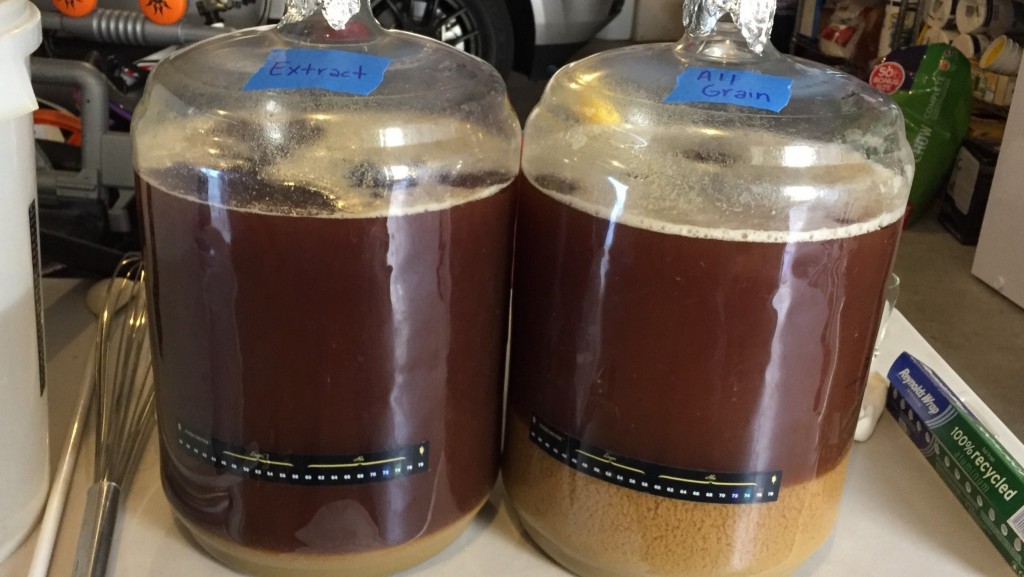
With my groundwater still a tad on the warm side, I let the worts finish chilling to my 66˚F/19˚C target in the chamber, it took about 4 hours, at which point I pitched the starters. Fermentation activity was visible in both beers just 12 hours later.
I began ramping the temp to 72˚F/22˚C 3 days into fermentation then notice a week later the kräusen on the extract batch had fallen while it persisted on the all grain beer. Interestingly, a hydrometer reading corroborated my Beer Bugs showing the former had yet to reach target FG at this point and the latter had. I let them sit 2 more days before taking a confirmatory hydrometer reading.
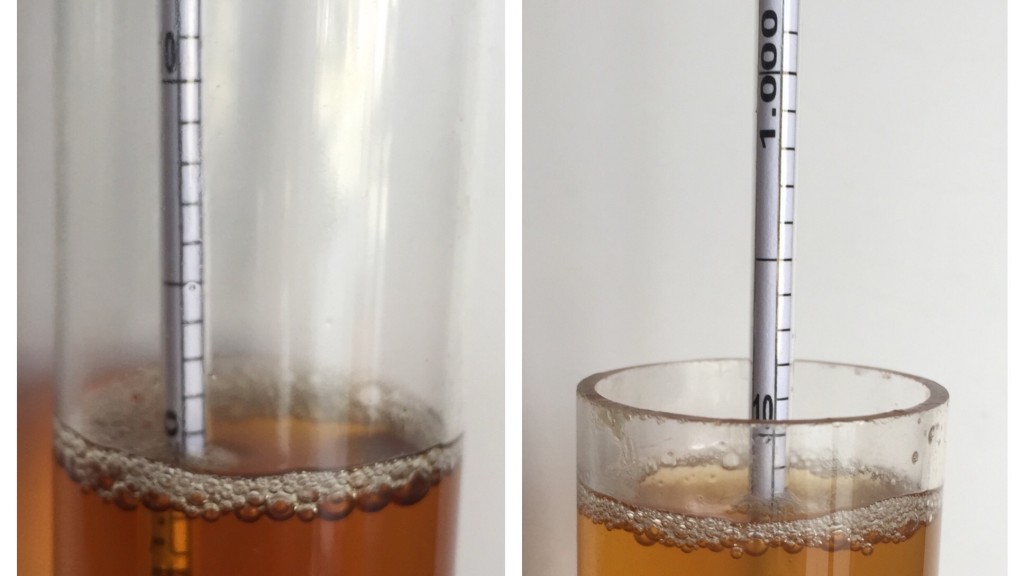
No change at all, indicating to me fermentation was complete. I proceeded to crash the beers, hit both with gelatin, then keg them up.
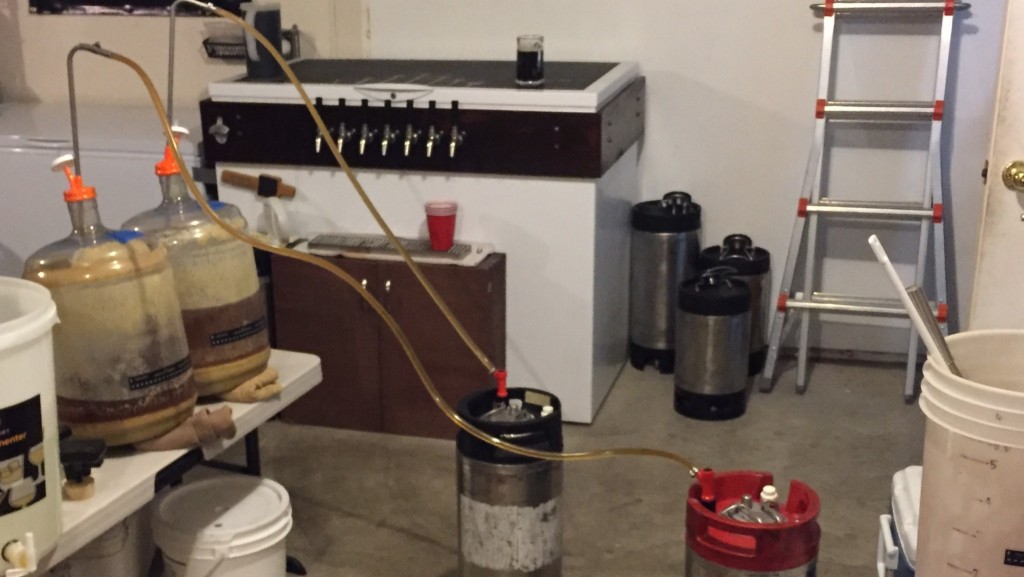
After force carbonating and letting the kegs rest in my keezer for 4 days, the beers were both looking quite delectable, if but slightly different.

The extract beer appeared somewhat clearer and noticeably darker than its all grain counterpart. Was this an indication of other character differences?
| RESULTS |
A total of 20 people participated in this xBmt including BJCP judges, experienced homebrewers, and dedicated craft beer junkies. Each participant was blindly served 2 samples of the extract beer and 1 sample of the all grain beer in different colored opaque cups then instructed to identify the one that was different. In order to achieve statistical significance given the sample size, 11 participants (P<0.05) would have had to correctly identify the extract sample as being unique. In the end, exactly 11 tasters (p=0.020) made the correct selection, indicating the all grain beer was reliably distinguishable from the extract beer by this panel of participants.
The tasters who were correct on the triangle test were subsequently asked to complete a brief evaluation comparing only the different beers while still blind to the variable being investigated. Overall preference was all over the board with 4 tasters preferring the all grain beer, 2 preferring the extract beer, 3 experiencing no difference, and 2 saying they noticed a difference but had no preference. When asked to select the beer they thought was made using grains and no extract, a rather large majority of 8 chose correctly, while only 3 incorrectly chose the extract sample.
My Impressions: I truly believe malt extract has a character all its own, which isn’t a negative thing, just a simple reality due to the extract making process. This opinion was backed up by my experiences on multiple “blind” triangle tests served to me by others– I was correct every single time with a very high degree of confidence. I perceived the extract beer as having a more rich caramel character while the all grain beer was cleaner with a slightly more toasty edge and the hops seemed to come through a bit stronger as well. While I’ve nothing against extract, I handily preferred the all grain beer, though I’ll admit I was quite impressed with how tasty the extract version of this popular beer was. For those hesitant to make the jump to all grain, the extract version of Brain Eater Pale Ale was easily one of the best extract beers I’ve tasted in a long time, I’d highly recommend trying it out if you’re a lover of Citra hops!
| DISCUSSION |
There’s a part of me that wants to (ab)use these results as support for my perspective that extract imparts a particular flavor to beer, a character you don’t get when brewing without it. Unfortunately, some are bound to view such a statement as me saying extract is bad, which isn’t true at all. All I’m trying to say is that extract is different. We’ve all heard/read people say that with good process, an extract beer can be just as good as an all grain beer. Sure, I agree that by following certain procedural rules, a beer made with malt extract can be really good, though I’m not yet convinced it can taste the same as a similarly made all grain beer, a claim supported by the results from this xBmt. Does that mean I think extract is bad? Not a bit.
What has you experience with extract and/or all grain been? Did you start with one method and transition to another? Please share your thoughts in the comments section below!
Support for this xBmt comes from Great Fermentations, a home beer and wine making supply shop based out of Indiana offering a large selection of the finest and freshest ingredients, and all the gear you need to make great beer. Let Great Fermentations help you craft something great!
Support Brülosophy In Style!
All designs are available in various colors and sizes on Amazon!
Follow Brülosophy on:
FACEBOOK | TWITTER | INSTAGRAM
If you enjoy this stuff and feel compelled to support Brulosophy.com, please check out the Support Us page for details on how you can very easily do so. Thanks!

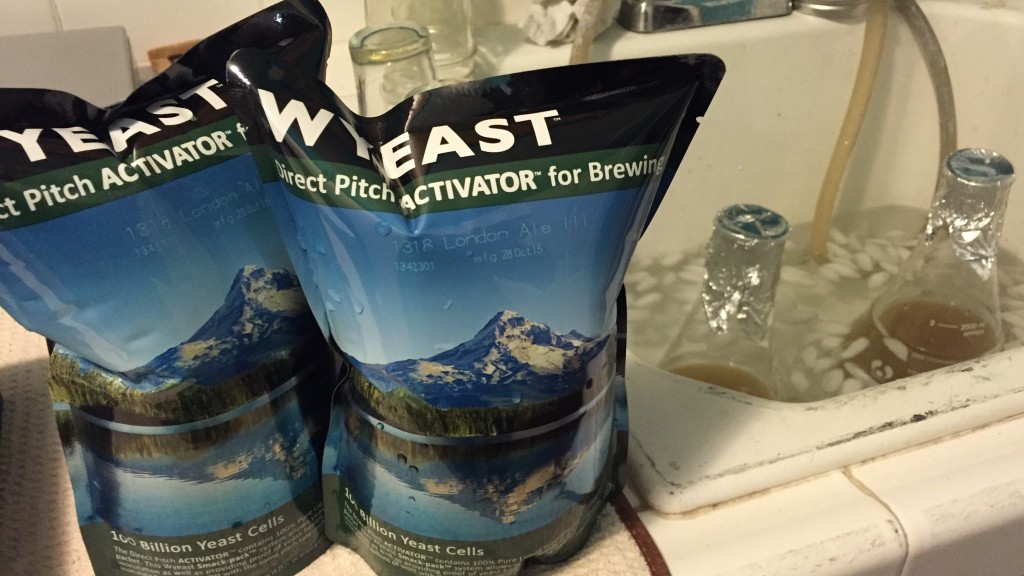
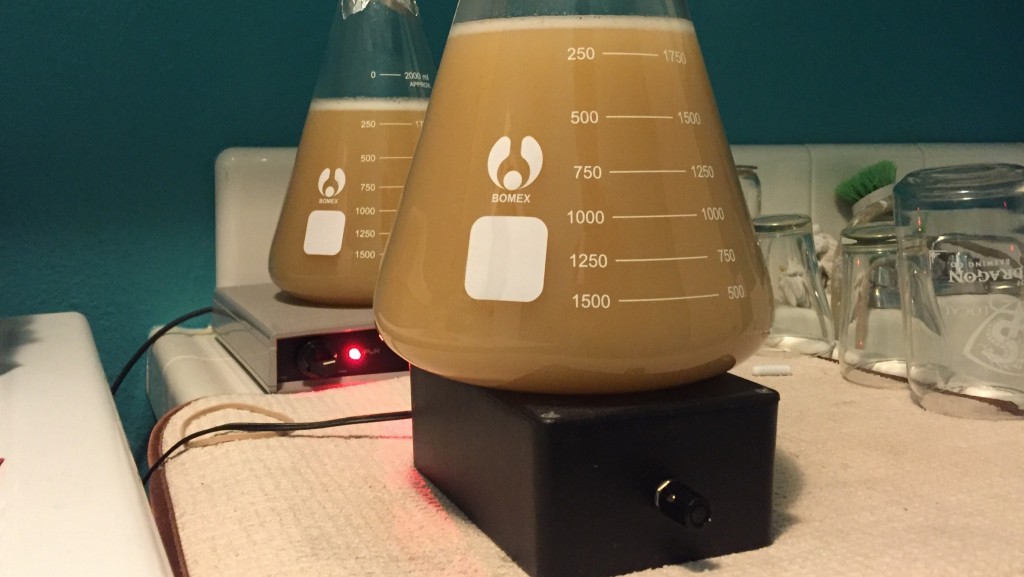
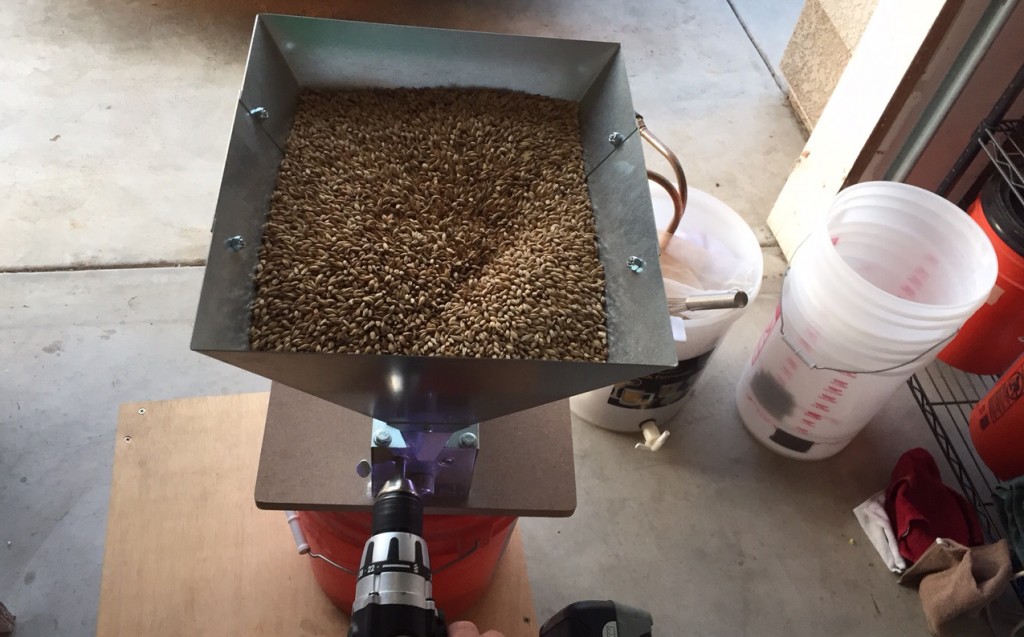
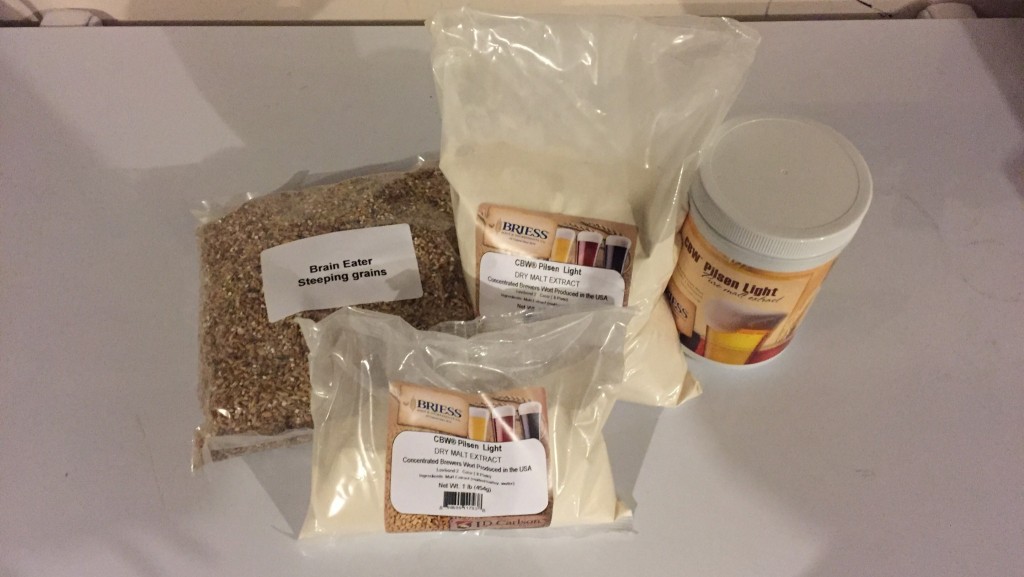
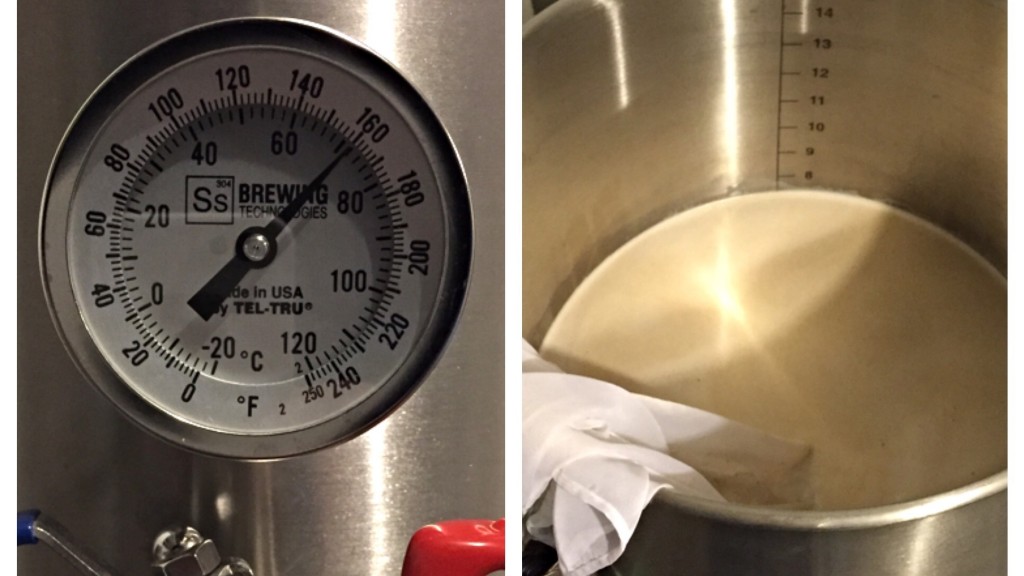
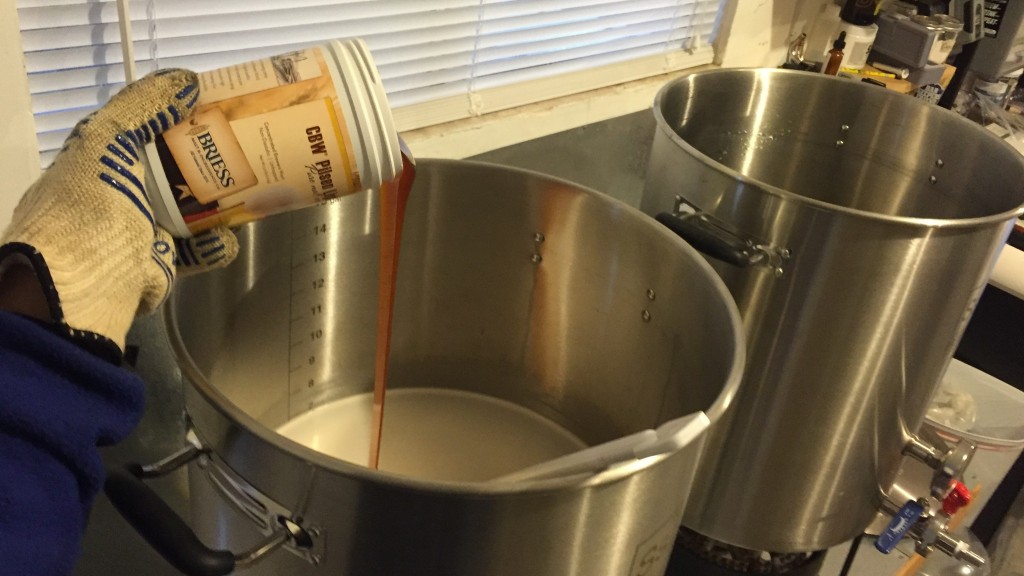
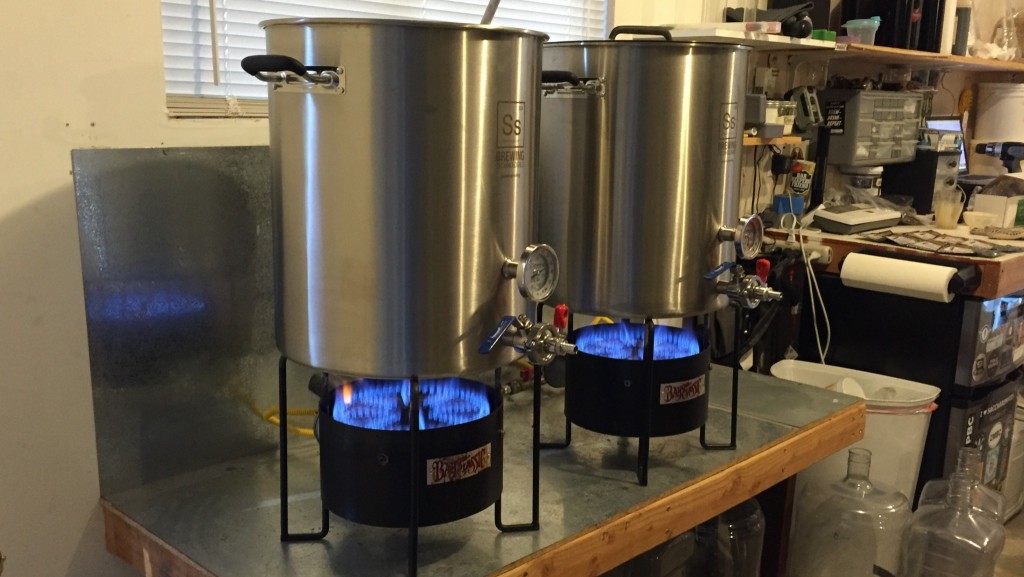
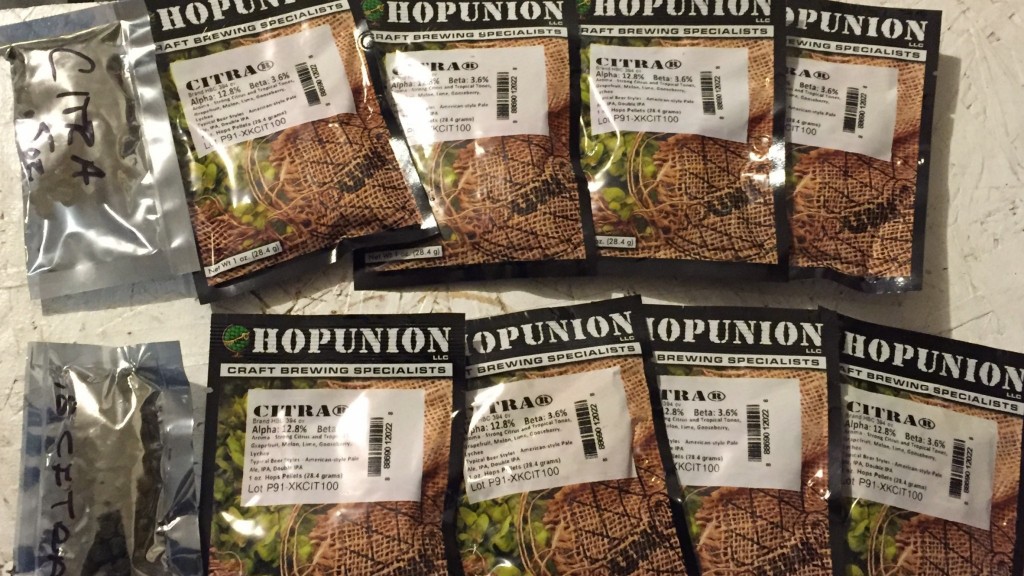
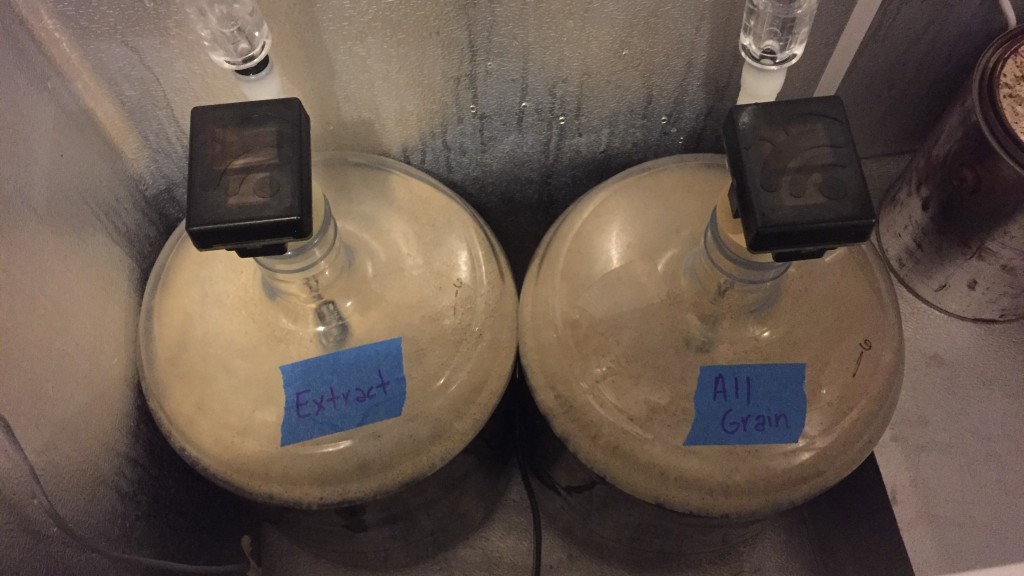











56 thoughts on “exBEERiment | Extract vs. All Grain: Comparing American IPA Recipe Kits”
Awsome stuff! I’ve been starting to look at partial mashing. I brew all-grain but my equipment only allows for about 7 kg of grains for mashing. So it’s hard brewing bigger beers. So I think I will try to use a partial mash to reach desired OG.
Maby an exbeeriment evaluating a recipe made all-grain and partial mash?
Love your site btw! Keep it up!
Definitely on the list!
Sweet! ☺
Still waiting for an xbrmt on partial mash. I suspect it would be indistinguishable from the all grain. And I suspect it might out perform the all grain in taste.
Is it possible you use partial mash? ????
I might be a fan of partial mash… ???? but honestly I’m so “rich” with grain right now I really need to get some stuff kegged and bottled and make some more beer.
Another xbrmt idea… late sugar addition v. High krausen addition. Testing the idea that high krausen addition improves apparent attenuation.
That does sound like a good xBmt idea, doesn’t in Malcolm 😉
I’m against it. Back of the queue for that one.
Can you please explain why you think a partial mash beer would be superior to one made from all grain? Not that I don’t think it is possible, I am just curious why you are so confident.
Of the four extract (LME) batches I have made, only one was really good. I believe the other 3 were subject to poor storage and had oxidized, giving the beer that “homebrew” taste and a very dark hazy look. Two were kits from Northern Brewer and the other two used LME from my LHBS. The one good beer was with the LHBS LME. I had to dump the last LME batch…
In an effort to understand some hops I have on hand, I’m going to try some small batches with dry malt extract and see how it goes.
I’m super curious about the differences between DME and LME…
Over the past year I have made many extract and all grain beers and cross compared them. all were simple pale ales with a healthy amount of hops. Light Lme with 1# cara20 vs pilser dme with 1# of cara40 vs Pilsner 2 row and #1 cara40. The lme and dme extract beers tasted completely different. The lme was very “molasses” like, the dme was very clean and crisp. the dme and all grain beers tasted far more similar, the all grain was just a tad more “cracker” “saltine” then the dme. In fact, I brought my dme pale ale to my home brew club, and the brewery I work for and no one guessed it was a extract beer. I am of the opinion now that dme is a far superior product when compared to lme, Maybe due to it having a much longer shelf life? Most lme cans I see are over 6 months old…
Just a couple of things I’d like to point out that you may want to look at in the future:
1) LME has a definite “twang” especially the older it gets. I wonder how using all DME would taste as DME ages much better?
2) How old were the DME and LME and how were they stored? If the warehouse has wild temperature swings, that will affect the LME and to a lesser extent the DME flavor
3) I’d make sure the the DME matches the grains you’re using for the all grain batch as there’s likely to be differences otherwise. Maybe try Pilsen DME + pilsner grains in a SMaSH as the grain base would match and the differences would be much easier to compare.
Great Post!
There’s no doubt that the quality of DME and LME has greatly improved from when i started home brewing. I switched to all grain a long time ago and never looked back. Quality and reduction in cost improved. Every couple of years i try an extract batch again and i could always tell it was slightly different, but not sure if i could tell because i knew how it was made.
On the other hand ill have beers made from other brewers that when i find out it was an extract batch i’m shocked, because its really good!
I’d love to see an experiment similar to this one, but with a stout/porter. I typically do all grain/partial mashes for my lighter beers because the main grains I am tasting are the base malt. The difference of extract and grain will me much more prominent.
However I often do extracts for my stouts and darker ales since the malts I really taste are the specialty grains. I believe that the character you speak of imparted by the extract is much less noticeable in these beers, if at all.
When I hear the statement that “a well made extract beer can be indistinguishable from an all grain”, I assume that “well made” includes style selection, and therefore I stand by that statement.
This is a great point. A beer that’s not meant to be light and crisp, but rather darker and a bit carmelly seems like a more fair comparison between extract and all grain.
Love the Article, glad to see the AG-Extract comparison! The hard thing about this experiment is choosing the style. I agree that there is a distinct caramel character in extract, but there are many styles that include that character intentionally. I have to think it would be harder to spot the difference the darker and sweeter the beer gets.
Did you treat your brewing water for either batch?
Any thoughts on the significant trub difference between batches?
How about that BeerBug review?
Thanks Guys!
I treated the water for the all great batch, but not by much, just to get my calcium in the 75 ppm range. Not sure about impact of trub differences. Beer Bug review is coming, want to get a good feel for it first.
So if looking at the final gravities only, we could postulate that the the extract recipe should be tweaked to substitute some more fermentable sugar (table sugar) in place of the malt extracts. Would be interested to see if that tweak resulted in less distinguishable beer (assuming final gravity is closer).
I find that I have to be extremely cautious when using LME. It is easy to burn or caramelize it in the pot. DME floats and dissolves. I’ve done more BIAB than extract, but a couple of LME batches have failed to fully attenuate, and remained sweeter. I’m not sure if that is due to the LME itself, but one batch left visible browned residue in the pot, and had a slightly burnt flavor.
Thanks for doing and sharing the experiments.
Marshall, how do you account for the fact that the extract recipe may be poorly designed? When I was developing an extract version of my Rye IPA recipe I found I had to add sugar to achieve the same FG, mouthfeel and flavor as the AG version. It’s almost as if you’re comparing kits rather than extract vs. AG. Whatcha think?
I tend to think sugar additions would help, but that’s a whole other xBmt. Both beers were good, just different.
Very cool Xbmt!! One that most homebrewers can easily identify with. I made extract kits for years before I made the switch to all grain. I admit to being a bit intimidated to make the switch back when I was an extract brewer. Mash temps, sparging, plus the extra equipment seemed like I was gonna get in over my head. I thought I needed some exotic 3 tiered tippy dump. Thankfully that is not the case, and guys like Marshall show us that you can make awesome beer with the most minimalist of equipment.
I came back to brewing about 18months ago, with the intentions of getting my feet wet with extract, and then converting over to all grain. 18months later, I am still doing extract w/specialty grains, but have moved away from kits, and making my own recipes. While I understand there is a difference between the 2, I am perfectly happy to have a quicker brew day, as well as less of a chance to screw things up, with extract and specialty grains than all grain, as well I don’t need to spend the extra money on more equipment (would at the very least need a bigger pot to at least to BIAB than I have now).
I mail order most of my brewing supplies, and the weight difference in grain vs liquid extract is negligible. I don’t anticipate going to all grain anymore.
Even without making adjustments to mash and boil times, the AG batch took maybe 1 hour longer. I’d recommend trying it at least once, it’s fun!
Marshall, did you do a full boil with the extract? You mentioned that you added a portion of the extract at the end of the boil. I do this too because I can only do partial boils on my stove top. That greatly improved my extract brewing and reduced kettle caramelization some it the other commenters have mentioned.
For a full boil my thought would be to add all of the extract at the beginning of the boil. If you do that, the pre-boil gravity should be the same as the all-grain, thus making the IBUs the same.
I did everything commonly accepted as best practices when using extract, which included a full boil. Later extract additions are said to reduce color and some flavors associated with extract beers.
I think you fucked up, (your scientific vernacular). Even intermediate brewers will add the DME first then the LME near the end of the boil. Seems like you were intentionally skewing the results.
Read the first extract xBmt 🙂
“these changes effect the character it imparts” (just noting a typo to the author)
Very cool xBmt, something to bring up with our local homebrew in bringing people into the fold of homebrewing.
On an unrelated note to the xBmt, in the picture with the Sterile Auto Siphon I notice you are going straight from the carboy into the keg via a keg connection and not through the main hole (whatever the lid is referred to), along with an auto release on the gas line.
Is there a particular reason for doing this? Did you purge the keg with CO2 before transferring?
It makes sense as a means of reducing potential contamination, just wondering if there are any other reasons?
I don’t purge with CO2 prior to filling, I’m not convinced it makes much if any difference. I started filling through the disconnect into a sealed keg to reduce the chances of a fly or some other critter making its way into my beer, an issue that gets worse during the warmer months.
This sounds like a XBeeriment freebie that you can tack on to the end of a Hop Chronicles run. (Well, freebie on the brewing side anyway, you’ll just need to keg slightly different and then run the triangle test) If you have short kegs you won’t even need to brew a double batch. Or maybe even fill regular kegs halfway for a real litmus test.
I’ll bet it makes no discernible difference in the short run. Since I don’t purge my kegs either, I’m hoping it doesn’t make a difference in the long run.
Would there be less hop aroma in the non-purged keg one month later?
You’re publishing some great content. Keep up the excellence!
It’s on the list!
As a homebrewer who started with extract, went to all grain, and now brew mostly mini-mash and extracts with steeping grains,(note have won numerous medals including advanced to finals of NHC) there are differences. Though BJCP judges cannot tell when I have brewed an all grain vs extract beer I agree most of the extract beers will be a little darker. The biggest secrets are to use fresh DME, add as much of the DME in the last 20 minutes and controlling your fermentation temps. The BYO article”Extract Brewing like a Pro” from Oct 2010 issue changed my brewing forever. I will go along with you and say if you did two recipes using the different techniques you will be able to tell taste and color differences, but after years of having people taste my beers including high ranked judges, the tell me they cannot tell the whether the beer I brewed was an extract beer or an all grain. Not scientific, but I think my results in competitions are an indicator. Several of those extract beers have scored in the low and mid 40’s. Keep up the good work.
I agree with Denny that this experiment is comparing kits rather than comparing extract with all grain. The extract version effectively has a different grain bill as LME and DME are made with added crystal malt, so they aren’t equivalent to base malt and the final beer ends with a higher gravity.
Also, I think it’s striking that for two very different beers, nearly half the tasters couldn’t tell them apart and statistical significant was only just reached. It does suggest triangle taste tests have limited sensitivity.
I’d like to think Great Fermentations and other kit makers do their best to match their extract recipes to the AG versions, hence the use of Pils malt extract rather than Pale when no Pils was used in the AG recipe. Either way, the purpose of this xBmt was precisely to compare extract to AG when using available kits, as that was one of the most popular requests following the first extract xBmt.
It’s presumptive for one who never tasted the beers to conclude they were “very different,” though I don’t disagree that the triangle test has its limitations. Cheers!
Not presumptive – finishing gravities of 1012 and 1019, and you could tell the difference every time yourself (see “My Impressions” above).
I wonder if there is a way of making tasters more sensitive to subtle differences, such as drinking water between beer samples or judging aroma of all three separately before tasting (if you don’t already do that)?
If that came across as contentious, I didn’t mean for it to. Sure, I could tell the differences every single time, but they weren’t terribly stark, I still had to focus. A pint of either separated by a few minutes and it’s possible I would have believed they were the same beer.
As far as the disparity in FG, check out the Mash Temp xBmt results.
I do serve water with the beers and notice most participants rinse between samples. I’m not convinced it has to do with their palates at this point.
Perhaps if you know what you’re looking for, the difference is easier to spot.
Also, with that much Citra, other flavours would be overshadowed.
We assumed the same thing and adapted the survey awhile back to allow tasters to change their response following revelation of the variable. Out of over 100 participants, a total of 1 changed their response on the triangle test… and it was from the correct to an incorrect sample.
I tend to agree that a ton of hops can mask other flavors, but we have to remember, in the end, this xBmt produce statistically significant results.
I am curious to know how you like the brewbugs? I have been contemplating buying one but I have read some conflicting reviews.
It’s incredibly addicting, totally convenient, and absolutely unnecessary. For those happy with their setup and with the funds, I’m happy recommending it.
Hope for a brewbugs review at some point
I want to get a good feel for them before I start promoting them…
Occasional DME user here. In a Dutch xbmt competition I used 30% DME in a strong weizen and made the exact same beer using all grain to see if I get some significant differences. From 14 tasters only 4 people picked the extract version from the all grain brew. I’m not saying this will exclusively be the case but a remarkable result nevertheless. Curious to see if you get similar results in a similar xbmt!
I remain a big fan of partial mash as arguably the best process for the casual home brewer. I have won many awards with Partial Mash, and the overall cost of partial mash equipment is reasonable. The results of Partial Mash are always spot on in terms of gravity and volume. When we brew as a group it is always step mash, No Sparge, but we are blessed to have hundreds of pounds of grain in our inventory. When I brew at home, it is almost always small batch or partial mash.
Thanks for lots of interesting experiments, this has become my favourite brewing web-site.
A small question on this exbeeriment: What was OG for the two beer? With the same OG, the difference in FG would imply almost one percentage point difference in ABV, which may be perceptible to some.
A general comment on the triangle test: I love the triangle test, but they can only be used to reject a hypothesis that everybody is guessing.
In the current exbeeriment the result (11 of 20 pick the right one) would give as a point estimate that 1/3 can tell them apart (6-7 know , and 4-5 of the remaining get it right by guessing). This has two interpretations: Taste buds are different and only 1/3 of the sample can tell them apart and can do so every time and the remaining 2/3 are guessing. Alternatively we all have indentical taste buds and everybody is able to tell them apart, but only 1/3 of the time.
I have noted from the “Impressions” that sometimes the exbeerimenter can tell beers apart when there is no significant result. Other times – like with fermentation vessel – the exbeerimenter cannot tell them apart even when the results are significant. Indicating that some differences are perceptible to some of us but not others.
You can actually test if there is a subsample who consistently perceive a difference by doing the triangle test twice on the same subjects. Under the null-hypothesis you try to reject – everybody is guessing – two pure guesses by the same person are independent. Hence under the null hypothesis you can consider them two observation and this would increase the power of the test without having to gather more subjects. When you do find a significant result, and if taste buds are different – the one who get it right the first time should be more likely to get it right the second round.
The tasters who were correct on the triangle test were subsequently asked to complete a brief evaluation comparing only the different beers . . . , 3 experiencing no difference. How can the be counted as correct when they admit no difference. Shouldn’t they be removed to the “incorrect” group?
That’s not how stats works.
I agree with Kjell Arne Brekke on: 1) Brulosophy is my favorite brewing site, 2) the test is only to reject a hypothesis that everybody is guessing, and 3) his double triangle test suggestion.
I would like to revise my prior comment. I should not have said move them to the incorrect group. Instead I suggest another measure after removing all (right or wrong) who admitted no difference from the sample.
Keep up the good work!
1. That’s awesome, thank you!
2. The triangle test is independent of the preference survey you’re referring to, which we only include because readers kept asking us to when we stopped.
3. A double triangle test would eliminate blindness, for one, and be quite difficult since we don’t track performance while collecting data, as that could bias us.
Brewery owner here. Remember in Top Gun, when Jester says “You never ever ever leave your wingman”? You never ever ever use liquid malt extract. Briess lists the ingredients for their extracts, except for Amber. Try an all grain clone of a 100% Traditional Dark DME beer. Use double the recommended nutrient, a ton of O2 and a heavy pitch of yeast on the extract wort.
Brewery owner here. Please stop using liquid malt extract, even from Breiss! Breiss dry malt extract is indistinguishable from all grain, and is what you should be using in extract beers. Making blanket claims about extract, while using LME, makes you look like an amateur. Otherwise you’re doing a great job and I love your stuff. But you gotta kick your bad LME habit and start setting a better example.
Sorry I am so late to the party, I just recently learned of your site and have been loving the exbeeriments! (much to the chagrin of my employer, although he doesn’t know it yet).
Anyhow, I just recently made the jump to BIAB from about 10 years of extract brewing. The price of a 3 vessel system had me shying away from all grain. once I read up on BIAB, i bought an inexpensive 15-gallon kettle and was off to the races.
the first thing I did was an exberriment of my own, not even knowing yet that you do such things here. my results were similar, having brewed a blonde kit that i have brewed numerous times.
my BIAB version was much lighter in color and much more appealing in the glass, I too notced that it was much cleaner, crisper and had a better mouth feel. admittedly this was not a blind test, so knowing the source of the beers I may have been jaded.
another thing i learned about BIAB is that the kit that I bought so frequently was $27 and change. the all grain version of the same recipe was only $22+ … 20 batches pays for all my new gear.
anyhow, that’s my 2 cents
cheers and keep up the good work! love the site!
Thanks for the feedback! I promise to keep the fact you read our results between us 🙂